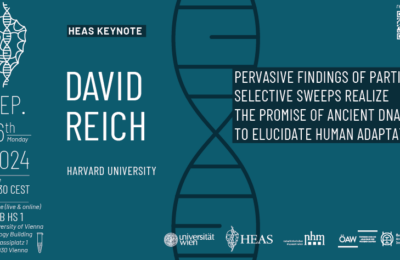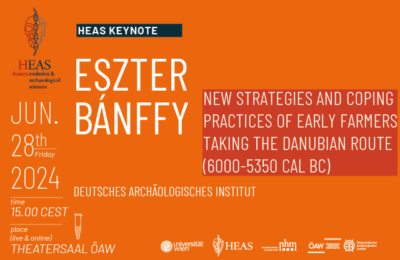HEAS Keynote with David Reich
Pervasive findings of partial selective sweeps realize the promise of ancient DNA to elucidate human adaptation. David Reich is a Professor of Genetics and Human Evolutionary Biology at Harvard, and an Investigator of the Howard Hughes Medical Institute. He received his Bachelor’s Degree in Physics from Harvard University in 1996, his doctorate in Statistical Genetics from the University of Oxford in 1999, and did post-doctoral work with Eric Lander at the Whitehead Institute / MIT Center for Genome Research. He has shared multiple awards with Svante Pääbo including the 2017 Dan David Prize in Archaeology & Natural Sciences, the 2019 Wiley Prize in Biomedical Sciences, the 2020 Darwin-Wallace Award from the Linnaean Society of London, and the 2022 Massry Prize (the latter also joint with Liran Carmel). He was highlighted by Nature as one of “Ten Who Made A Difference” in 2015, was awarded the 2019 National Academy of Sciences Award in Molecular Biology, and was the recipient of the Hermann J. Muller Award for contributions to our understanding of genes and society. His laboratory has produced approximately half the genome-wide ancient human DNA data published to date, he is the author of more than 200 scientific papers, and he and wrote the 2018 book Who We Are and How We Got Here: Ancient DNA and the New…

